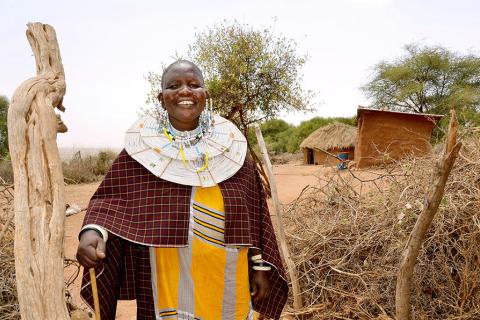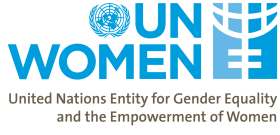
Proportion of countries where the legal framework (including customary law) guarantees women’s equal rights to land ownership and/or control
Last updated on 1 February 2022
This indicator is currently classified as Tier II. The Food and Agriculture Organization of the United Nations (FAO) is the main Custodian agency. UN Women and the World Bank are partner agencies.
Unit of measure: Articles present in primary and/or secondary legislation.
Why is this indicator important?
According to UN Women, "deep legal and legislative changes are needed to ensure women's rights. Stark gender disparities remain in economic and political realms." Discriminatory laws need to be reformed if women and girls are to be empowered with secure, equal rights to land. It will help women and girls achieve power and potential, secure food for their families, generate income, and sustain other livelihood needs. This includes both statutory and customary law. Together with 5.a.1, this indicator encourages countries to review and, where necessary, to strengthen existing policy and legal measures aimed at securing equal rights to land for women and men.
How is the indicator measured and monitored?
SDG indicator 5.a.2 measures the extent to which a country’s legal framework supports women’s ownership and/ or control over land including inheritance rights for women and girls. Progress towards the SDG target will be determined by the extent to which countries have incorporated internationally recognized standards, particularly from the Voluntary Guidelines on Responsible Governance of Tenure (VGGT) and the International Convention on the Elimination of Discrimination against Women (CEDAW), into their legal frameworks. Existing statutory laws are assessed against the six following proxies:
Proxy A: Joint registration of land compulsory or encouraged through economic incentives
Proxy B: Compulsory spousal consent for land transactions
Proxy C: Women’s and girls’ equal inheritance rights
Proxy D: Allocation of financial resources to increase women’s ownership and control over land
Proxy E: In legal systems that recognise customary land tenure, existence of explicit protection of the land rights of women
Proxy F: Mandatory quotas for women’s participation in land management and administration institutions
According to the metadata document, the legal and policy framework encompasses the Constitution, primary and secondary legislation as well as existing policies. Control over land is defined as the ability to make decisions over land, its usage and benefits. In addition to legally acquired land, land ownership in systems where land is owned by the state refers to long-term leases, tenancy, or use rights, to name but a few. The indicator also considers customary legal systems that have been recognised by the state and regulated in national law. It also takes into account the rights of partners in consensual unions when the legal framework recognises such unions.
Data sources include publicly available legal instruments on land (including land registration), family, marriage, inheritance, and gender equality. Only the proxies found in the legally binding primary and secondary legislations are considered in the reporting, but the methodology encourages countries to also review bills, and policies to monitor progress against the 6 proxies. Once the legal assessment is completed, the officially designated national institution(s) responsible for SDG indicators submits a reporting questionnaire to FAO for a quality check, to ensure that the assessment was carried out in accordance with the reporting methodology. Once the process is completed, the national institution officially submits its report to FAO. In 2019 and 2020, 36 countries have reported on this indicator.
As this is one of the few legal indicators in Agenda 2030, one of the key challenges in the reporting lies with the identification of national institutions responsible for SDG indicator 5.a.2. Owing to the nature of this indicator, FAO recommends the nomination of high-level focal points within institutions with a mandate on land, agriculture, justice or gender equality. The responsible institution(s) for SDG indicator 5.a.2 should then nominate a legal expert to carry out the assessment in accordance with the reporting methodology. Another methodological challenge concerns the assessment and computation of heterogenous customary tenure systems.
By Anne Hennings, peer-reviewed by Naomi Kenney, FAO; Martha Osorio, FAO; Everlyne Nairesiae, GLII Coordinator at the Global Land Indicators Initiative (GLII) at GLTN, Un-Habitat and Clinton Omusula, Land Data and Knowledge Management Specialist at the Global Land Indicators Initiative (GLII) at GLTN, UN-Habitat.
Official indicator data
The indicator “measures” the level to which a country’s legal framework supports women’s land rights, by testing it against six proxies drawn from international law and internationally accepted good practices. Currently, data is only available for proxy E: In legal systems that recognise customary land tenure, existence of explicit protection of the land rights of women. It is given on a scale from 1 to 6, where: 1 - there is no evidence of guarantees of gender equality in land ownership and/or control in the legal 6 - highest levels of guarantees of gender equality in land ownership and/or control in the legal framework * Select "year" below to see the most recent data for more countries.
Other related indicators on Land Portal
In addition to the official indicator data, the following indicators provide information concerning women’s tenure security, land rights, and access to land.
Between Law and Reality: Understanding De Jure and De Facto Women's Land Rights in Brazil
A Q&A with Patricia Chaves from Espaço Feminista, Brazil, explains the discrepancies in accessing property and inheritance rights for women in Brazil as well as data that helps to inform grassroots women about their rights. The piece also provides powerful accounts of women's personal experiences.
Women’s Land Rights and Sustainable Development Goals in Tanzania
In the effort to address global sustainability challenges affecting people, prosperity, and planet, in 2015, Sustainable Development Goals (SDGs) were adopted by the global community to replace the Millennium Development Goals (MDGs). SDGs have recognized women’s land rights as opposed to its predecessor, MDGs. Of over 230 indicators, three are on women’s land rights and seven are generally on land rights.
Women's Land Rights Visiting Professionals Program
The application process for the 2018 Visiting Professionals Program is now open until August 20, 2017.
DFID’s work on Gender and Land
Pagination
- Previous page ‹ previous
- Page 6
Improving Access to Customary Justice: A Means to Strengthen Women's Land Rights
On April 10, representatives from U.S. NGO Landesa presented an impact evaluation on USAID’s Kenya Justice Project during the World Bank’s Annual Conference on Land and Poverty.
Pagination
![]()

Undertake reforms to give women equal rights to economic resources, as well as access to ownership and control over land and other forms of property, financial services, inheritance and natural resources, in accordance with national laws
Indicator details
The indicator is conceptually clear, has an internationally established methodology and standards are available, but data is not regularly produced by countries.
Key dates:








